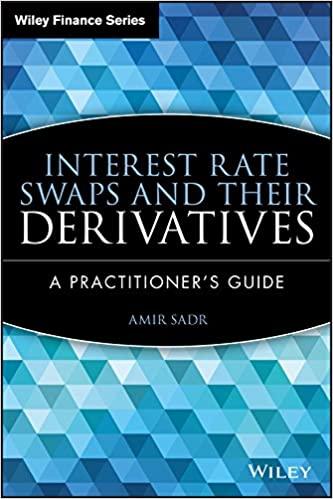Question
GIve a positive response to the following: What are 3 fundamental decisions that are of concern to the finance team? While profit maximization is critical,
GIve a positive response to the following:
What are 3 fundamental decisions that are of concern to the finance team? While profit maximization is critical, cash flow is the mainstay of any business corporation. As such, the finance team is fundamentally concerned with: The capital budgeting decision: which productive assets should the firm buy? This is the most important decision because they drive the firms success or failure. The financing decision: how should the firm finance and pay for assets? Working capital management decisions: how should day-to-day financial matters be managed so that the firm can pay its bills, and how should surplus cash be invested? What is the impact of these on the balance sheet? The capital budgeting decision: productive assets become the Assets portion on the balance sheet. It is the starting point of working capital, and a companys cash flow (ability to cover daily expenses and liabilities) and solvency. Without adequate assets, particularly current assets (such as cash, inventory, and accounts receivable), the company is already in a bad state. The financing decision: company financing and creditor relationships largely account for a companys liabilities; which, in turn, eats away at a companys cash flow and profitability. The higher the liability, the lower the working capital. In fact, a company that is unable to effectively manage liabilities may find itself in debt and/or out of business. Working capital management decisions: working capital is current assets minus current liabilities on the balance sheet, which is the capital needed to function on a daily basis (meet short term expenses), and debt free money that can be used for expansion and investments. It shows whether or not the company can make a profit in its day to day operations; and is essentially a measure of operational efficiency (liquidity and solvency) and the financial health of the company. Explain the difference between a stakeholder and a stockholder and why both are important to the success of an organization. Business philosophy and practice has now evolved in such a way that we must both establish the distinctive roles and interests of the stakeholder versus the stockholder of a company, while still recognizing the criticality of their interdependent roles to the success of the firm. A stakeholder is an entity (such as employees, community, suppliers, the government, among others) that has a vested interest (a stake) in a business organization, while the stockholder is the holder of shares (and owner) of the business (Charreaux & Desbrires, 2001). In fact, some organizations (such as the University of Maryland and other state universities), do not have stockholders. They, however have a plethora of stakeholders, including taxpayers, students, professors, administrative staff, government bodies, and more. Both the stakeholder and stockholder must perform effectively in their respective roles for the business to succeed and excel. The stockholder provides the financial resources that fuel asset acquisition, payment of liabilities, and ultimately, working capital. At the same time, the stakeholder (usually accountable to stockholders and other stakeholders) must not only put the companys resources to work, but must do so in ways that effectively manage risks (financial, legal, and social responsibility risks) in securing cash flows, and enhancing stock price (where applicable) (Ilie, 2015). Ultimately, it is the stakeholders that will determine the firms long-term profitability and success. References Charreaux, G. & Desbrires, P. (2001). Corporate Governance: Stakeholder Value Versus Shareholder Value. Journal of Management & Governance, 5 (2), 107-128. Doi: 22p 10.1023/A:1013060105433 Ilie, L. (2015). Challenges for Financial Managers in a Changing Economic Environment. Procedia Economics and Finance, 27, 726-730. doi:10.1016/S2212-5671(15)01054-0
Step by Step Solution
There are 3 Steps involved in it
Step: 1

Get Instant Access to Expert-Tailored Solutions
See step-by-step solutions with expert insights and AI powered tools for academic success
Step: 2

Step: 3

Ace Your Homework with AI
Get the answers you need in no time with our AI-driven, step-by-step assistance
Get Started


